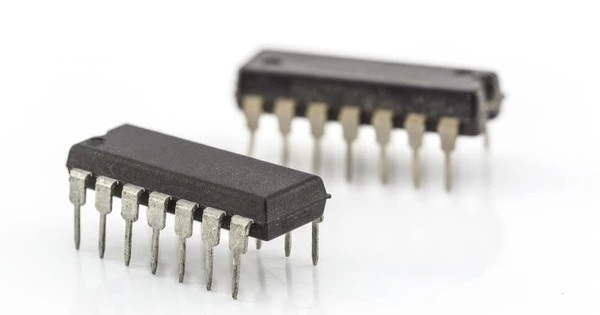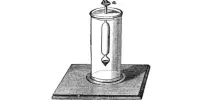An integrated circuit, also known as a monolithic integrated circuit, is a collection of electronic circuits housed on a single small flat piece (or “chip”) of semiconductor material, typically silicon. On the chip, a large number of miniaturized transistors and other electronic components are integrated. As a result, circuits are orders of magnitude smaller, faster, and less expensive than those built with discrete components, allowing for a high transistor count.
It also known as a microchip or chip, is a small electronic device made up of various electronic components such as transistors, diodes, resistors, and capacitors that are fabricated on a single piece of semiconductor material, most commonly silicon. Metal traces on the chip’s surface connect the components, forming complex circuits.
The IC’s mass production capability, reliability, and building-block approach to integrated circuit design have ensured the rapid adoption of standardized ICs over discrete transistor designs. ICs are now used in almost all electronic equipment and have completely transformed the world of electronics. Computers, mobile phones, and other home appliances have become inseparable parts of modern society, thanks to the small size and low cost of integrated circuits (ICs) such as modern computer processors and microcontrollers.
Because of their small size, reliability, and low power consumption, integrated circuits (ICs) are widely used in modern electronic devices. They’re used in everything from simple consumer electronics like smartphones and computers to advanced systems like spacecraft and medical equipment.
There are several types of integrated circuits:
- Digital ICs: These circuits work with binary signals that represent 0s and 1s. They’re found in electronic devices like computers, microcontrollers, and digital signal processors (DSPs). Digital integrated circuits (ICs) perform arithmetic operations, logic operations, and data storage.
- Analog ICs: Continuous signal processing circuits are used in applications such as audio and video amplifiers, sensors, and power management. Analog integrated circuits operate with a wide range of voltage or current values, allowing them to handle complex real-world signals.
- Mixed-signal ICs: Because these circuits combine digital and analog components, they can process both types of signals. They are frequently used in data converters (both analog-to-digital and digital-to-analog converters), integrated sensors, and communication systems.
- Memory ICs: These circuits are specifically designed to store and retrieve digital data. They can be categorized into different types, including random-access memory (RAM), read-only memory (ROM), and flash memory. Memory ICs are used in computers, smartphones, and other data storage devices.
Several stages are involved in the fabrication of integrated circuits, including designing the circuit layout, etching the circuit pattern onto a silicon wafer, depositing various materials, and applying multiple layers of interconnects. The wafers that result are then cut into individual chips that are tested and packaged before being used in electronic devices.
Since its inception, IC technology has advanced significantly, resulting in the development of smaller, faster, and more powerful chips. Moore’s Law, which describes this progress, has revolutionized the electronics industry and enabled the creation of highly complex and sophisticated devices that we use today.
















